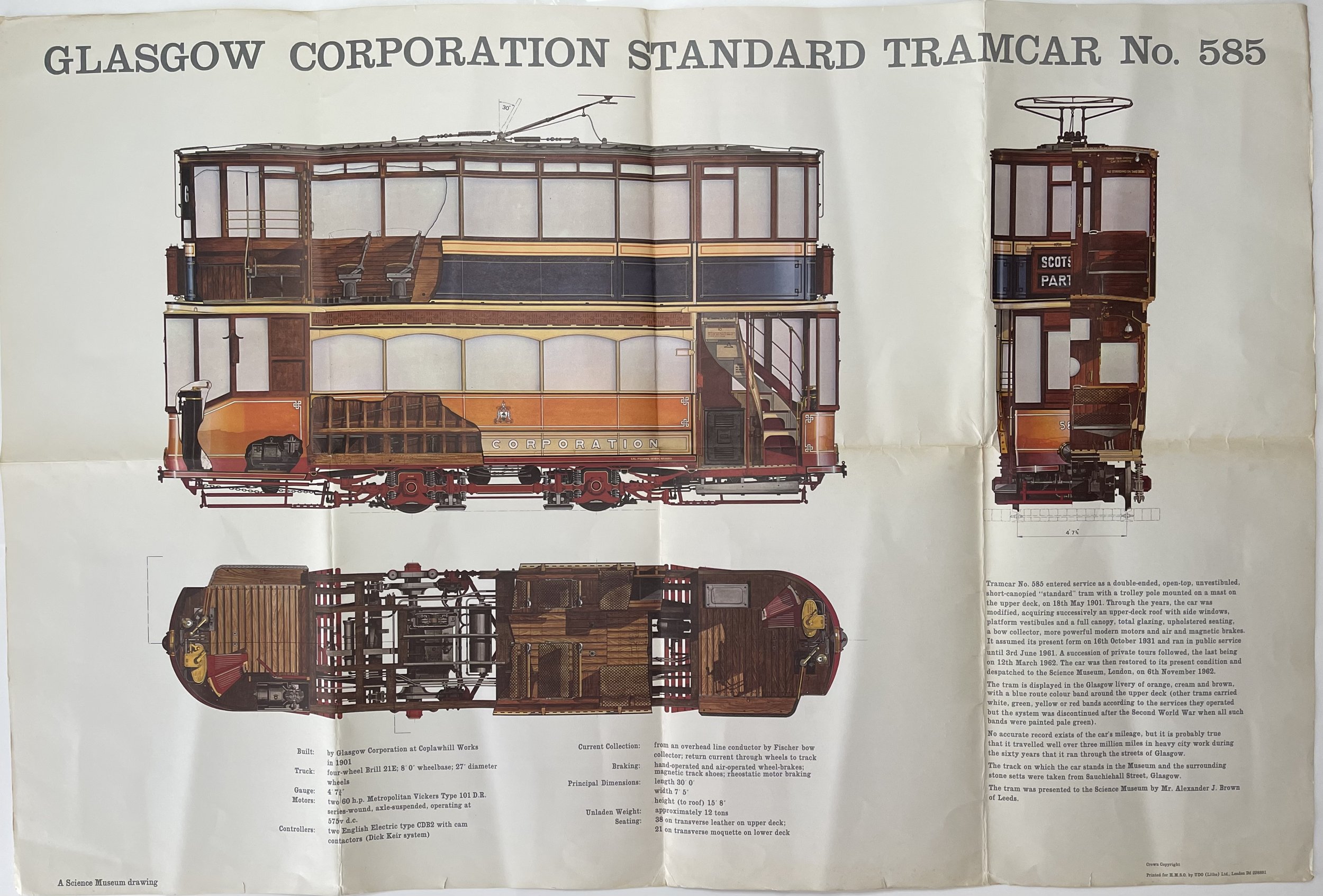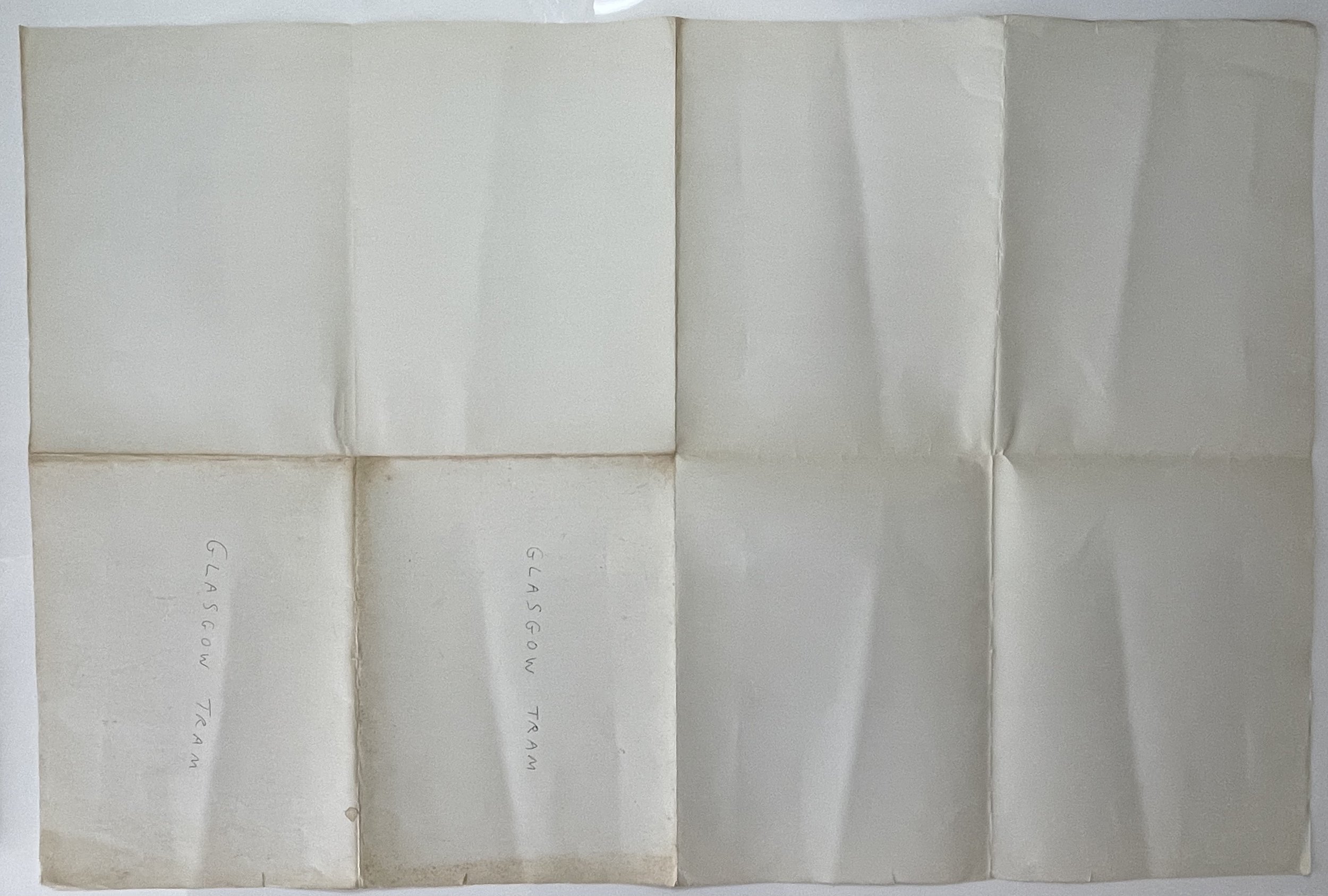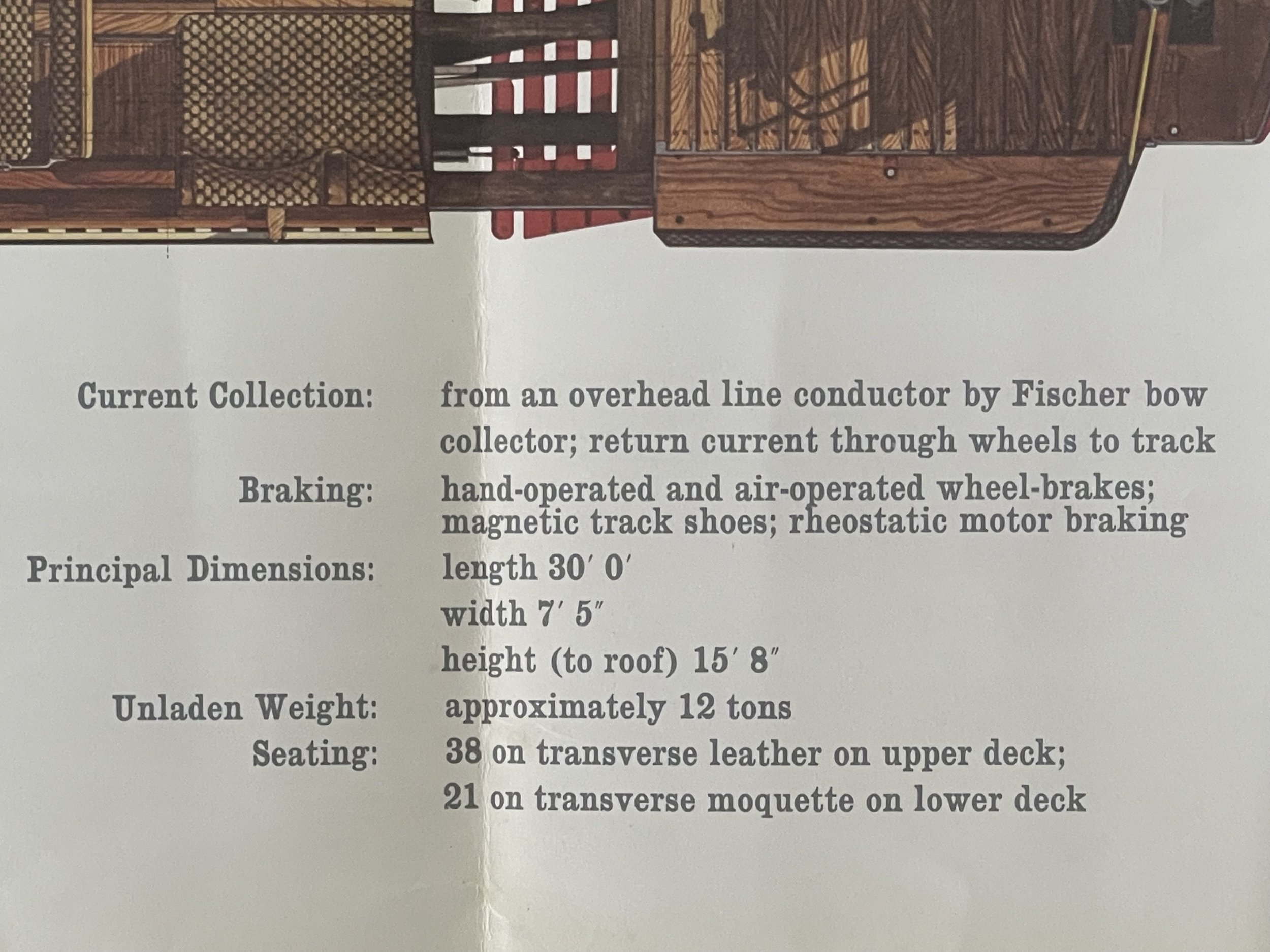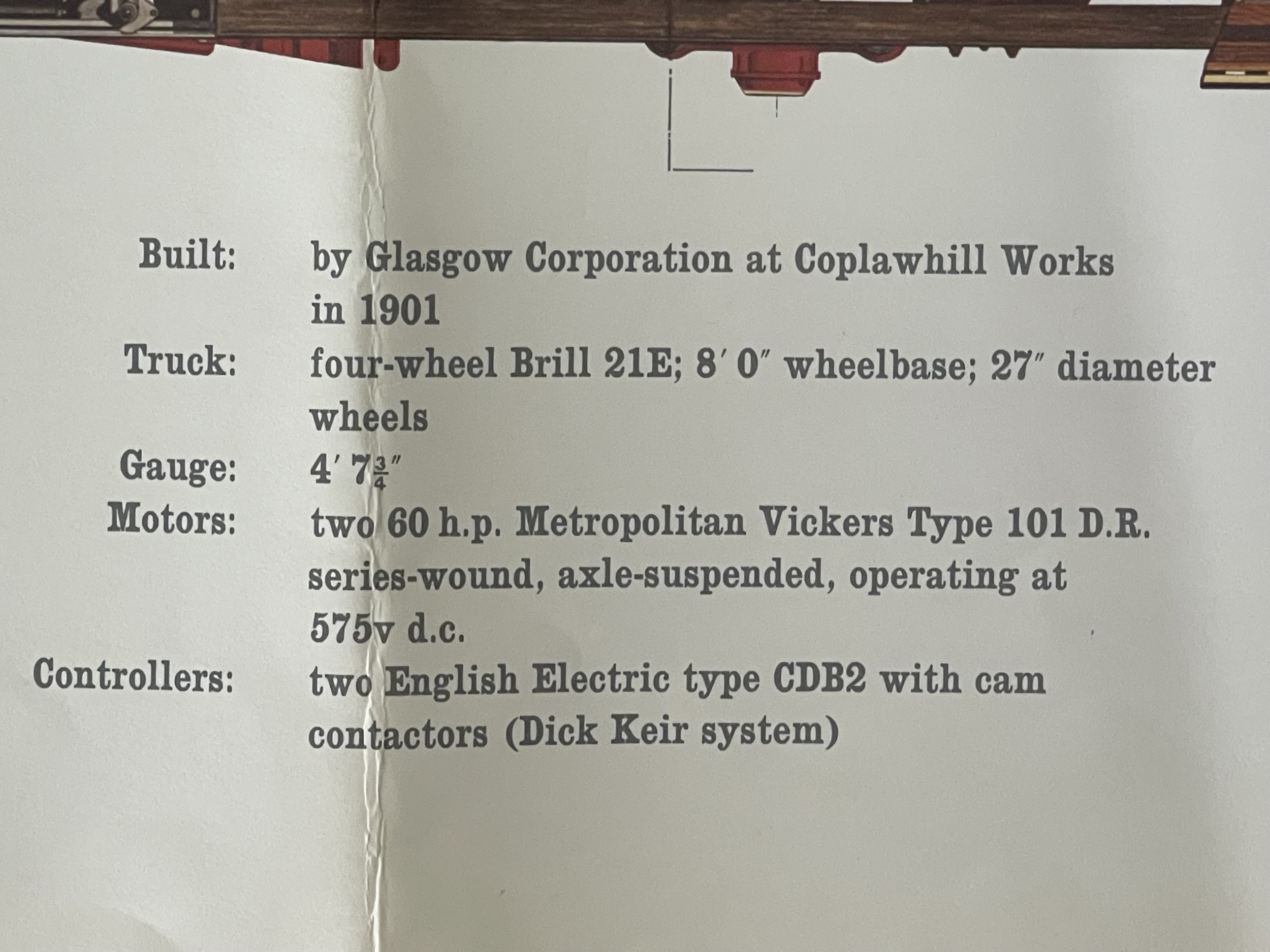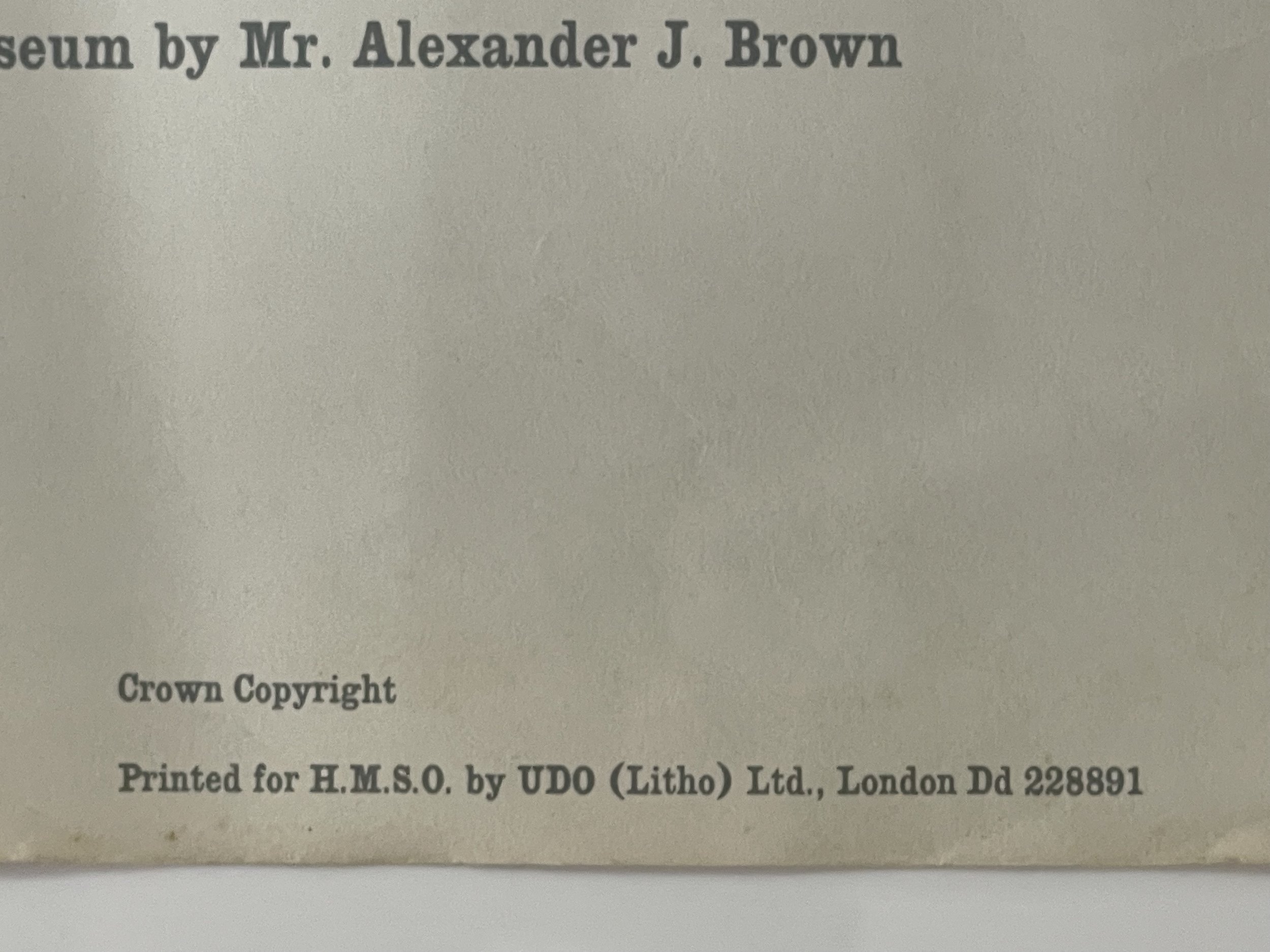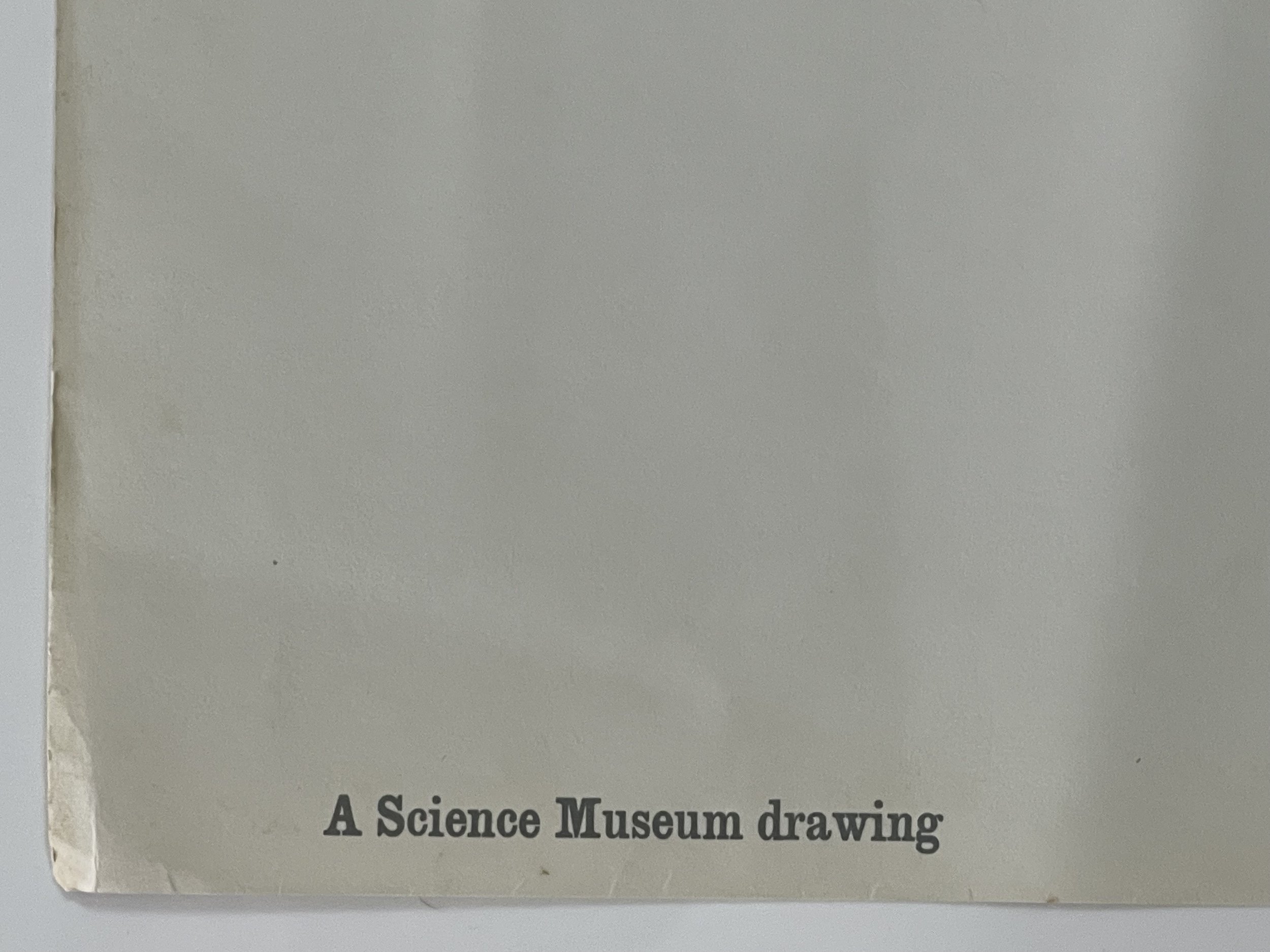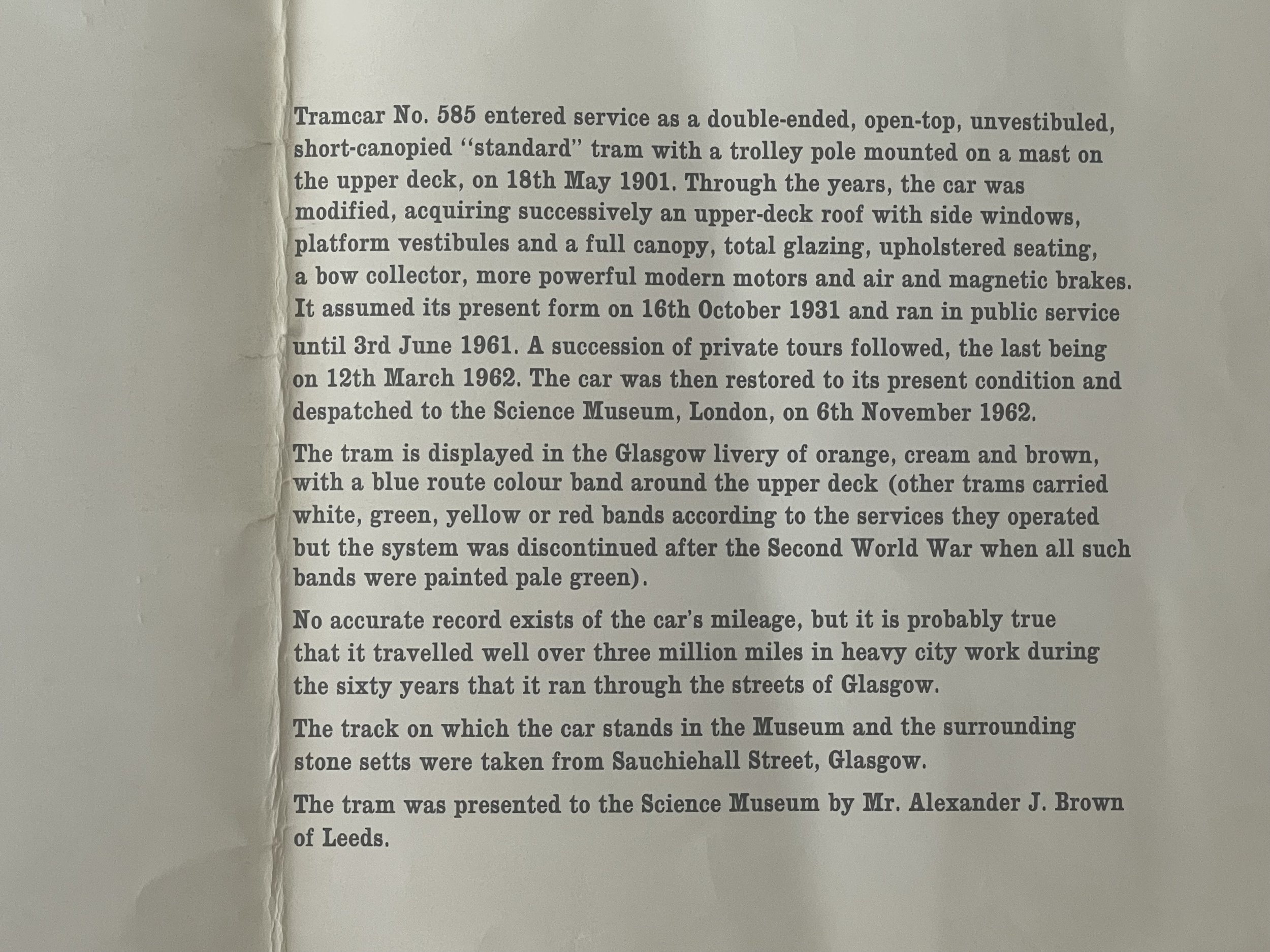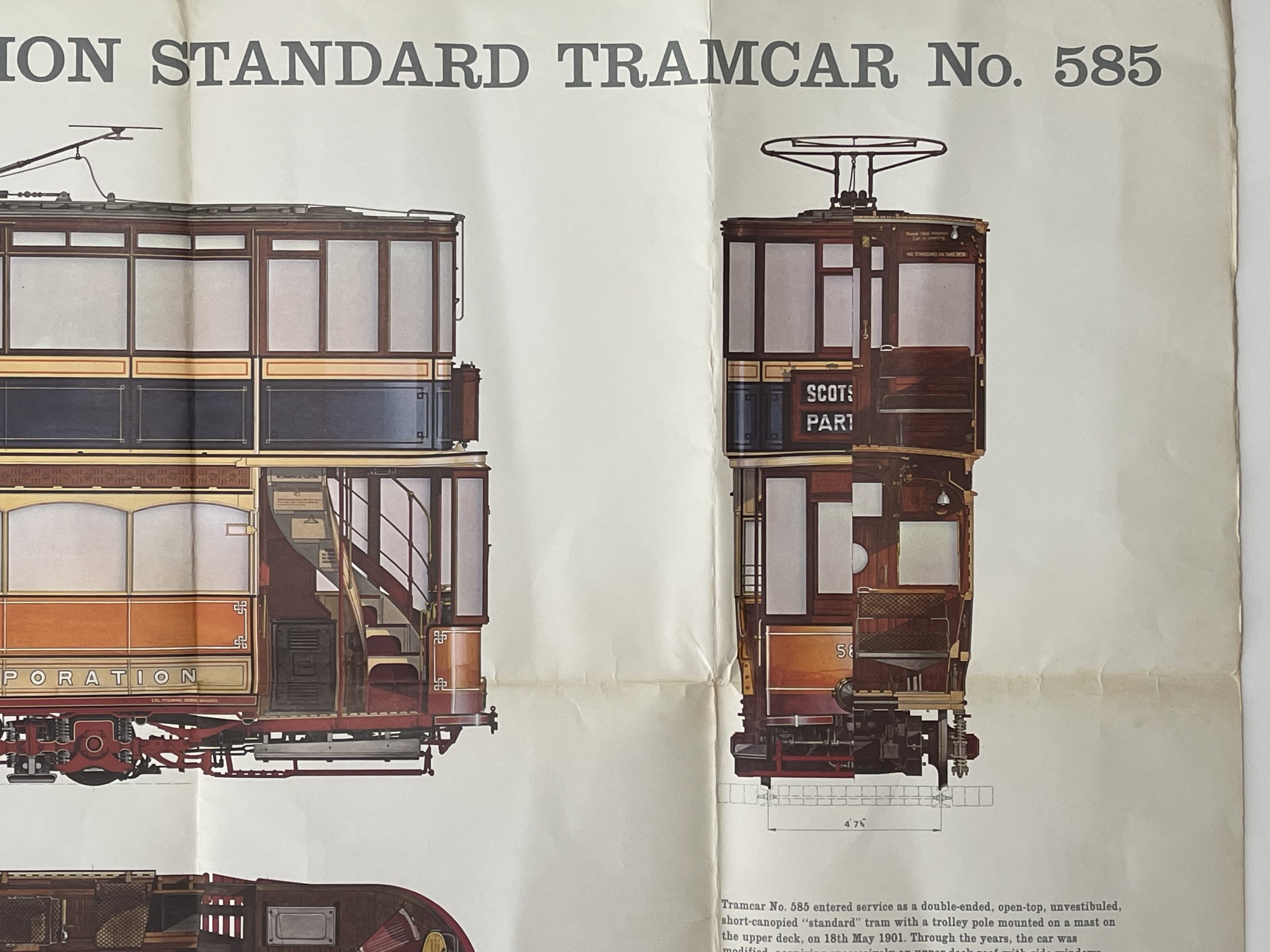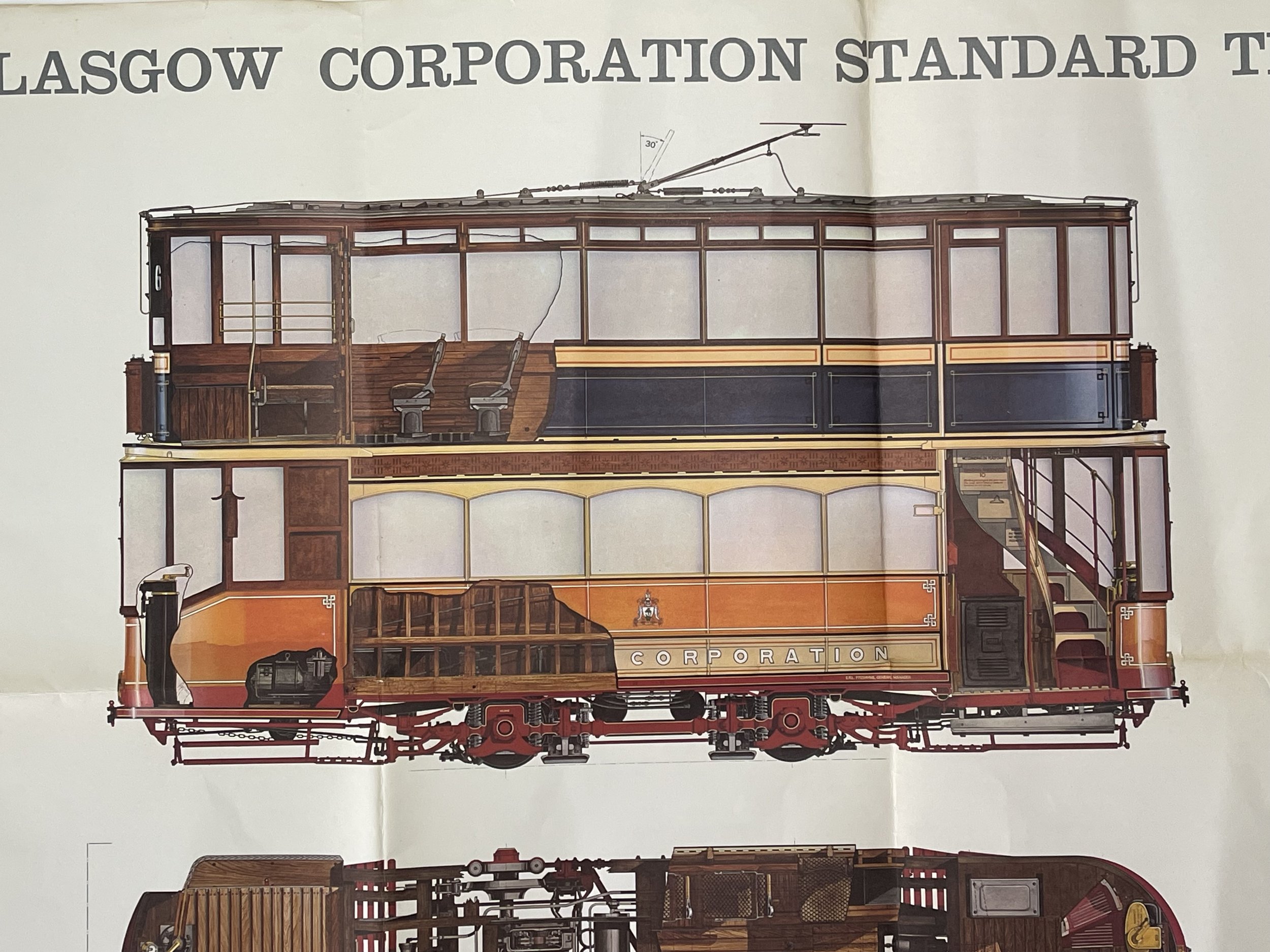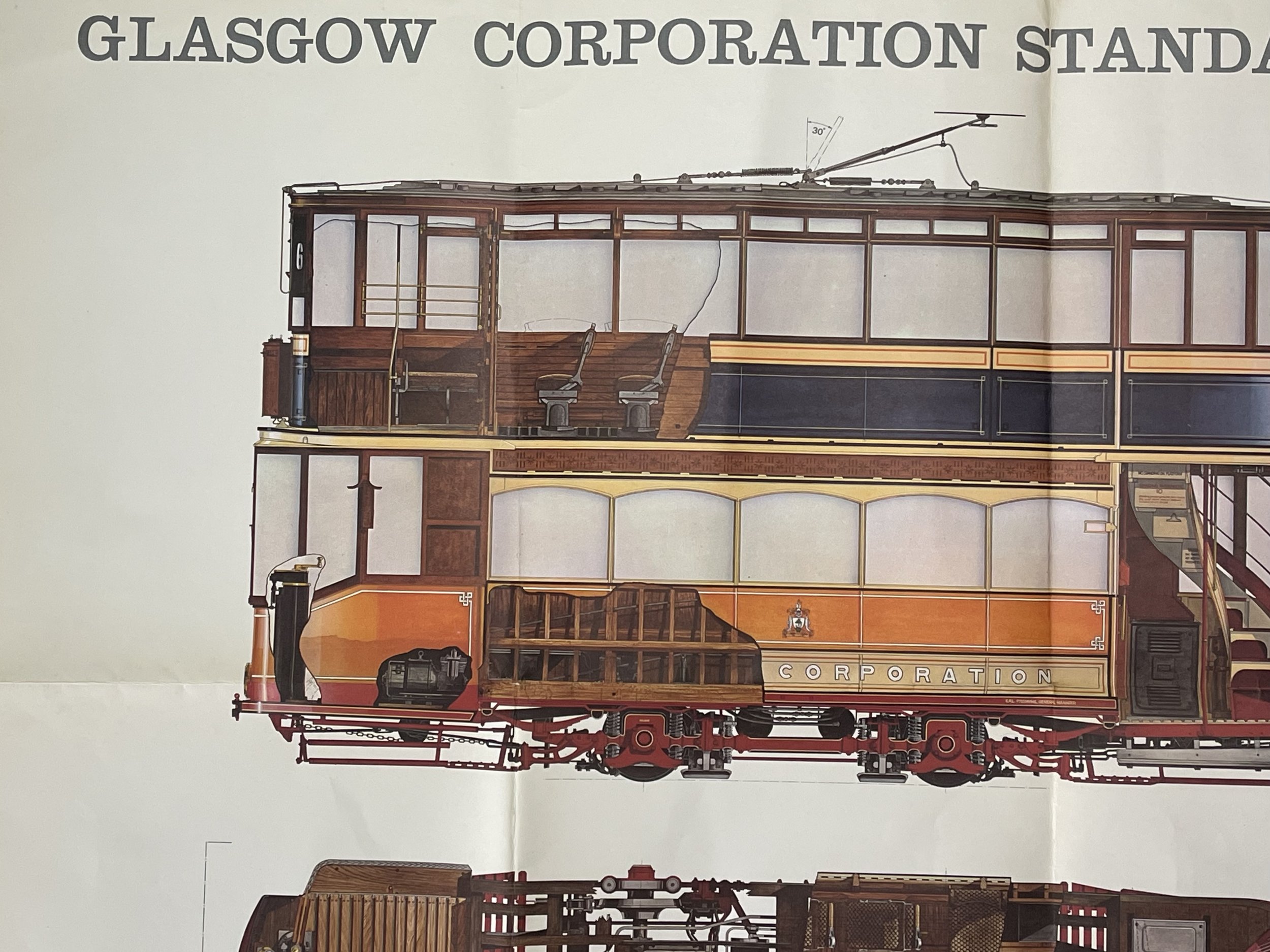Tramcar No. 585 - Glasgow Corporation Scotland - HMSO (Litho) - 1980s
Four-wheeled electric tramcar built for the Glasgow Corporation tramways in 1901, complete with overhead conductor, and contemporary track (note: the tramcar has been renovated by the Glasgow Corporation Transport Department.
The tram was built in 1901 and is a double deck car with an open upper deck. It was electric powered, with the electricity used produced by the Glasgow tram corporation themselves. Tramcar No.585 ran on Glasgow’s streets for the last time in 1962 when the network closed. The people of Glasgow’s love for the tram network meant that Tramcar No.585 was waved off by 250,000 spectators who had gathered to see its final journey. The tram was built in 1901 and is a double deck car with an open upper deck. It was electric powered, with the electricity used produced by the Glasgow tram corporation themselves. Tramcar No.585 ran on Glasgow’s streets for the last time in 1962 when the network closed. The people of Glasgow’s love for the tram network meant that Tramcar No.585 was waved off by 250,000 spectators who had gathered to see its final journey.
HMSO was established as a new department of HM Treasury on 5 April 1786, when John Mayor was appointed as its first superintendent. The creation of the office was a result of the advocacy of Edmund Burke for reforms of the corrupt, expensive and inefficient Royal Household and the Civil Service. Before the establishment of HMSO, the Crown would grant patents (exclusive rights) for the supply of stationery; the patentee could buy these supplies cheaply and then charge highly inflated prices.
At first, HMSO was the agent for various government departments but, from 1822, all government departments were required to buy stationery through the open competitions and tenders operated by HMSO.
HMSO also took over as official publisher for both houses of Parliament from Hansard in 1882.
In 1889, HMSO was granted letters patent under which it was appointed as Queen's Printer of Acts of Parliament ("printer to Her Majesty of all Acts of Parliament"). These letters patent also appointed the Controller of HMSO as administrator of the rights of Crown copyright. HMSO also took over publication of the London Gazette in the same year. In 1986 HMSO celebrated its bicentenary.
Most of its publishing functions were privatised in 1996 as a separate company known as The Stationery Office (TSO), but HMSO continued as a separate part of the Cabinet Office. Prior to 1996, it was the publisher of virtually all government material, such as command papers, legislation and official histories. After 1996, the Controller of HMSO remained Queen's Printer of Acts of Parliament and retained the role of administering Crown copyright.
Very good condition with folds. Some little blemishes and nicks to the periphery. Pricing and grading commensurate.
Four-wheeled electric tramcar built for the Glasgow Corporation tramways in 1901, complete with overhead conductor, and contemporary track (note: the tramcar has been renovated by the Glasgow Corporation Transport Department.
The tram was built in 1901 and is a double deck car with an open upper deck. It was electric powered, with the electricity used produced by the Glasgow tram corporation themselves. Tramcar No.585 ran on Glasgow’s streets for the last time in 1962 when the network closed. The people of Glasgow’s love for the tram network meant that Tramcar No.585 was waved off by 250,000 spectators who had gathered to see its final journey. The tram was built in 1901 and is a double deck car with an open upper deck. It was electric powered, with the electricity used produced by the Glasgow tram corporation themselves. Tramcar No.585 ran on Glasgow’s streets for the last time in 1962 when the network closed. The people of Glasgow’s love for the tram network meant that Tramcar No.585 was waved off by 250,000 spectators who had gathered to see its final journey.
HMSO was established as a new department of HM Treasury on 5 April 1786, when John Mayor was appointed as its first superintendent. The creation of the office was a result of the advocacy of Edmund Burke for reforms of the corrupt, expensive and inefficient Royal Household and the Civil Service. Before the establishment of HMSO, the Crown would grant patents (exclusive rights) for the supply of stationery; the patentee could buy these supplies cheaply and then charge highly inflated prices.
At first, HMSO was the agent for various government departments but, from 1822, all government departments were required to buy stationery through the open competitions and tenders operated by HMSO.
HMSO also took over as official publisher for both houses of Parliament from Hansard in 1882.
In 1889, HMSO was granted letters patent under which it was appointed as Queen's Printer of Acts of Parliament ("printer to Her Majesty of all Acts of Parliament"). These letters patent also appointed the Controller of HMSO as administrator of the rights of Crown copyright. HMSO also took over publication of the London Gazette in the same year. In 1986 HMSO celebrated its bicentenary.
Most of its publishing functions were privatised in 1996 as a separate company known as The Stationery Office (TSO), but HMSO continued as a separate part of the Cabinet Office. Prior to 1996, it was the publisher of virtually all government material, such as command papers, legislation and official histories. After 1996, the Controller of HMSO remained Queen's Printer of Acts of Parliament and retained the role of administering Crown copyright.
Very good condition with folds. Some little blemishes and nicks to the periphery. Pricing and grading commensurate.
Four-wheeled electric tramcar built for the Glasgow Corporation tramways in 1901, complete with overhead conductor, and contemporary track (note: the tramcar has been renovated by the Glasgow Corporation Transport Department.
The tram was built in 1901 and is a double deck car with an open upper deck. It was electric powered, with the electricity used produced by the Glasgow tram corporation themselves. Tramcar No.585 ran on Glasgow’s streets for the last time in 1962 when the network closed. The people of Glasgow’s love for the tram network meant that Tramcar No.585 was waved off by 250,000 spectators who had gathered to see its final journey. The tram was built in 1901 and is a double deck car with an open upper deck. It was electric powered, with the electricity used produced by the Glasgow tram corporation themselves. Tramcar No.585 ran on Glasgow’s streets for the last time in 1962 when the network closed. The people of Glasgow’s love for the tram network meant that Tramcar No.585 was waved off by 250,000 spectators who had gathered to see its final journey.
HMSO was established as a new department of HM Treasury on 5 April 1786, when John Mayor was appointed as its first superintendent. The creation of the office was a result of the advocacy of Edmund Burke for reforms of the corrupt, expensive and inefficient Royal Household and the Civil Service. Before the establishment of HMSO, the Crown would grant patents (exclusive rights) for the supply of stationery; the patentee could buy these supplies cheaply and then charge highly inflated prices.
At first, HMSO was the agent for various government departments but, from 1822, all government departments were required to buy stationery through the open competitions and tenders operated by HMSO.
HMSO also took over as official publisher for both houses of Parliament from Hansard in 1882.
In 1889, HMSO was granted letters patent under which it was appointed as Queen's Printer of Acts of Parliament ("printer to Her Majesty of all Acts of Parliament"). These letters patent also appointed the Controller of HMSO as administrator of the rights of Crown copyright. HMSO also took over publication of the London Gazette in the same year. In 1986 HMSO celebrated its bicentenary.
Most of its publishing functions were privatised in 1996 as a separate company known as The Stationery Office (TSO), but HMSO continued as a separate part of the Cabinet Office. Prior to 1996, it was the publisher of virtually all government material, such as command papers, legislation and official histories. After 1996, the Controller of HMSO remained Queen's Printer of Acts of Parliament and retained the role of administering Crown copyright.
Very good condition with folds. Some little blemishes and nicks to the periphery. Pricing and grading commensurate.
Code : A1097
Cartographer : Cartographer / Engraver / Publisher: HMSO
Date : Publication Place / Date - Circa 1980s
Size : Sheet size: approx 95 x 63.5 Cm
Availability : Available
Type - Genuine - Vintage
Grading A-
Where Applicable - Folds as issued. Light box photo shows the folio leaf centre margin hinge ‘glue’, this is not visible otherwise.
Tracked postage, in casement. Please contact me for postal quotation outside of the UK.
